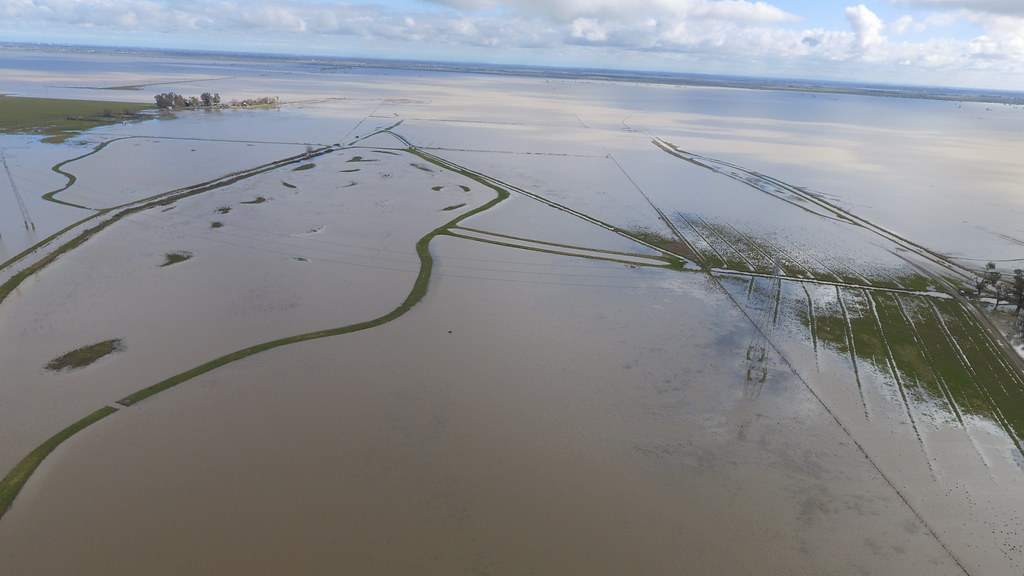Monday May 22, 2017

Now in its 35th year, the annual Salmon Restoration Conference draws scientists, managers, and conservation practitioners from across the West Coast to discuss efforts to revive struggling salmon populations and the habitats that support them. The most recent meeting was held from March 29-April 1 in Davis, California, under the theme of “Restoring Watersheds and Rebuilding Salmon Runs.” A variety of field tours brought participants out to the Sacramento, American, and Stanislaus Rivers to witness watersheds responding to California’s incredibly wet winter. Conference sessions and workshops included topics such as floodplains, salmon reintroduction, hatchery supplementation, and salmon survival, with many talks focusing on efforts in the Central Valley.
The event’s plenary talks provided a big picture overview of water management, with Jay Lund of UC Davis stressing the importance of having a diverse portfolio of water management options to draw from. While California currently has a good suite of options for the management of water supply, flood control, and water quality, he explained this diverse set of tools is lacking for ecosystem management, which became starkly apparent during the recent drought. Felicia Marcus of the State Water Resources Control Board encouraged groups with opposing viewpoints to have more empathy for each other when tackling unprecedented challenges in California water management, and noted that more olive branches were needed to bring people together. Jay Famiglietti of the National Aeronautics and Space Administration (NASA) Jet Propulsion Laboratory discussed NASA’s Gravity Recovery and Climate Experiment (GRACE) Mission, which uses a gravity-based satellite to track groundwater depletion from space. The project has documented a loss of freshwater availability in the food-producing regions of all the world’s major aquifers, including the Central Valley.
Floodplain restoration was a major theme of the conference, influenced in part by the meeting’s proximity to the iconic Yolo Bypass, a large floodplain created along the Sacramento River. A workshop dedicated to lessons learned from floodplain habitats presented many examples of floodplain restoration projects in the Central Valley and on coastal rivers, including the Eel River, Butano Creek, the Mattole River, and Ten-Mile River. While there are many differences between floodplain projects in tributaries and those near estuaries, some universal themes included the importance of timing for both flooding and drainage, and the need for connectivity when a river channel is divorced from the floodplain. Because it can be difficult to apply lessons from a large floodplain such as the Yolo Bypass directly to smaller floodplains, it is important to consider the ecological context of each site, which will dictate which benefits can be derived from floodplain restoration.
Some sessions about restoration stressed the need for big actions and partnerships, given that the status quo of salmon populations is currently very low, and even declining. The emerging Central Valley Salmon Habitat Partnership hopes to develop a stakeholder forum of many groups working together for salmon habitat recovery. The model is based off the successful Central Valley Joint Venture, which has helped restore large amounts of wetland habitat for bird recovery. Talks on salmon reintroduction included a pilot project examining the feasibility of moving Chinook salmon upstream of the Pardee Reservoir on the Mokelumne River, a plan for the reintroduction of winter-run Chinook salmon on Battle Creek, and plans to reintroduce rainbow trout into the San Luis Rey, Santa Margarita, San Mateo, and San Juan watersheds of southern California. While some talks critiqued plans to trap and haul spring-run salmon on the Yuba River, another talk explained why the Yuba River is critical for spring-run recovery – in part because it is safe from a volcanic eruption of Mount Lassen, which could wipe out fish in the rest of the spring-run streams in the northern Sierras.
A talk related to hatchery management suggested some bold approaches for salmon hatcheries in California, such as operating weirs on Central Valley tributaries to manage hatchery strays, and creating terminal fisheries that keep harvestable hatchery fish separate from natural spawning grounds. Another talk related to the San Joaquin River Restoration Program discussed efforts by the interim Salmon Conservation and Research Facility to slow down juvenile spring-run salmon growth rates to try the reduce the number of fish maturing precociously, or reaching sexual maturity at one or two years of age. Other talks related to the San Joaquin River described acoustic tracking and redd surveys of spawning Chinook salmon released below Friant Dam, and a personal perspective on shifting views of salmon restoration in the San Joaquin River basin. Some notable changes the speaker had observed over the past decade include recent discussions of above-dam passage, floodplain expansion, increased instream flows, and a recognition that small life-history stages like fry can contribute to population returns. The conference was a valuable opportunity to learn about a wide range of topics, and the final conference proceedings are now available online.
This post featured in our weekly e-newsletter, the Fish Report. You can subscribe to the Fish Report here.
